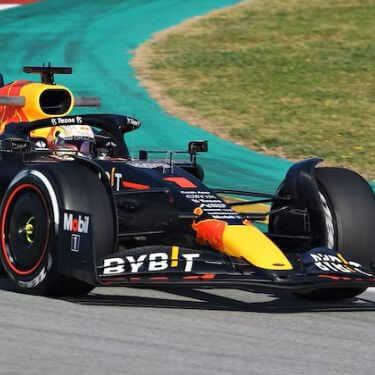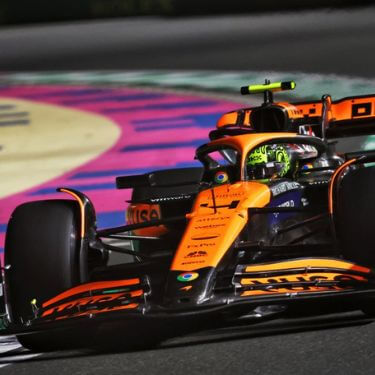Formula 1 is at the pinnacle of motorsport, where human skill and guts meet incredible technology at mind-blowing speeds. Twenty drivers from ten teams compete in Formula One, a global championship that tests the limits of single-seater cars on racetracks all over the world.
The season of 2025? It’s already causing a stir. Things are becoming more unpredictable in the best way due to new regulations, new people, and a degree of competition.
Millions of people watch every qualifying lap and race weekend as Formula One has grown to become a global phenomenon. Aerodynamics, tyre selections and those minuscule split-second calls can determine who wins and who loses in this sport, which combines advanced engineering with astute team tactics in an oddly lovely combination.
Oscar Piastri of McLaren is currently leading the championship with 266 points, only 250 points ahead of Lando Norris. That conflict is intensifying.
You begin to see all the strange relationships between teams, drivers, and the regulations that keep this whole circus going if you understand how Formula One operates. The sport continues to push the boundaries, constantly seeking to entertain and find the next advantage, with iconic tracks like Silverstone and Monaco coexisting with the newest hybrid technology.
F1 in 2025: Essential Details and Developments
In the 76th season of this crazy ride, the 2025 Formula One World Championship, a lot has changed: drivers are switching teams, new technical regulations have been implemented, and the atmosphere has changed from a few years ago.
An Outline of Formula 1
The best single-seater racing series in the world is Formula 1. Drivers are racing all over the world in crazy cars.
Each of the ten teams consists of two drivers. Teams are required to adhere to a rigorous set of technical regulations while designing and constructing their own cars.
Important components:
- Teams: Constructors compete for team and driver honours
- Races: Grand Prix competitions held on city streets and custom circuits
- Points system: Top 10 finishers receive 25 points, as do winners
There is a constructors’ champion and a drivers’ champion at the end of the year. In pursuit of that edge, teams invest hundreds of millions of dollars in their vehicles.
Significant Adjustments for the 2025 Season
Lewis Hamilton joining Ferrari is just the beginning of the crazy 2025 Formula One season. This year, the driver market has gone a little crazy.
Significant changes in drivers:
- Lewis Hamilton is going to Ferrari
- Five newcomers are added to the grid
- Many teams switch up their lineups
The 24-race schedule and new technical regulations this year are likely to upset the order of precedence. Everyone is rushing to perform well and is hoping that the new regulations will benefit them.
These rules make teams reevaluate everything. As engineers and drivers try to figure out what works, the power dynamics may change.
The Evolution of Formula One
Since its inception in 1950, Formula 1 has undergone significant transformation. From 1950 to 2025, you can observe how Formula One changed from simple cars with little safety to the technologically advanced, international circus it is today.
Historical turning points:
- 1950s: Safety is minimal as the championship begins
- 1960s–1970s: Sponsorships and aerodynamics are introduced
- 1980s–1990s: Global TV and electronics coverage
- 2000s: Hybrids begin to appear and safety becomes more important
- 2010s–2020s: Budget caps and sustainability
To make things safer and more competitive, the rules are constantly being changed. In contrast to the flimsy 1950s vehicles, modern Formula One cars are essentially spaceships.
Drivers, Teams, and Management
Teams are rearranging their lineups and leadership for the 2025 campaign. Although Hamilton’s transfer to Ferrari is arguably the most well-known story, several teams are also hiring new personnel and management.
Leading Formula One Teams and Builders
Ten renowned teams are vying for the championship on the 2025 grid. With Yuki Tsunoda taking the lead and Max Verstappen at the top, Red Bull Racing remains a dominant force.
With Lando Norris and Oscar Piastri, McLaren is doing very well. Both made an impression in 2024, and McLaren now appears to be a serious contender for the title.
When Ferrari signed Lewis Hamilton to race with Charles Leclerc, it created a stir. That is an incredible amount of talent and experience on one team.
Mercedes is going through some changes. The team is now led by George Russell and includes young Kimi Antonelli. They must assist Antonelli in adjusting to life after Hamilton.
In other news, Fernando Alonso continues to work with Lance Stroll at Aston Martin, while Carlos Sainz and Alexander Albon team up at Williams. Liam Lawson and Isack Hadjar are paired by Racing Bulls for 2025.
The Best Drivers to Observe
Max Verstappen – The man to beat is still Max Verstappen. At Red Bull, he has raised the standard for reliability and unadulterated speed.
Lewis Hamilton – The story of Lewis Hamilton at Ferrari is a major one. With his wealth of experience, the seven-time champion seems desperate to win another title.
Lando Norris – McLaren’s main man is now Lando Norris. He consistently contends for podiums and victories thanks to his race acumen and quick qualifying pace.
Oscar Piastri – The new wave includes Oscar Piastri. The Australian adjusted quickly and isn’t scared to compete with the big names.
Charles Leclerc – As a teammate, Charles Leclerc has a lot to prove with Hamilton. He still has that speed, and Ferrari might benefit from his home field advantage in Monaco.
Kimi Antonelli – Mercedes gives Kimi Antonelli his big break. As he takes over one of Formula One’s most recognisable seats, he has a lot to live up to.
Team Principals and Leadership Dynamics
Team principals maintain order by overseeing drivers, making critical decisions, and advancing technology without going crazy.
In addition to advancing Verstappen, Red Bull’s leadership continues to integrate Tsunoda into the team. They don’t mind changing things up.
The goal of McLaren’s executives is to increase their chances of winning the championship. To finish it, they want to give the car to both Piastri and Norris.
Managing two elite drivers is a difficult task for Ferrari’s management. If they want to win, they’ll have to keep everyone content and motivated.
Mercedes has to guide Antonelli through his rookie year and keep Russell competitive. If I’ve ever seen a juggling act, that is it.
Driver Swaps and Grid Modifications for 2025
The most significant move? Hamilton leaps from Mercedes to Ferrari. To be honest, that makes all the difference for both teams and the entire championship.
Hamilton is replaced at Mercedes by Kimi Antonelli. For a rookie, that’s a lot of pressure.
After Hamilton was picked up by Ferrari, Carlos Sainz went to Williams. Williams receives an experienced racer with car development skills.
There are more new people joining the celebration. Franco Colapinto sits at Alpine, while Gabriel Bortoleto joins Kick Sauber.
The grid is shaken by these actions. As the championship race continues, teams must find new combinations and maintain their progress.
Important Races and Circuits
Some F1 tracks just have a vibe you can’t fake. Every driver aspires to win at the iconic Spa-Francorchamps. Each of the twenty-four races on the 2025 calendar has its own peculiarities and difficulties.
Spa-Francorchamps’ Belgian Grand Prix
The Grand Prix in Belgium is a legendary event. The 7km layout of Spa-Francorchamps, which is tucked away deep in the Ardennes, pushes drivers to the limit.
That combination of Raidillon and Eau Rouge? It is recognisable. Automobiles speed uphill, swerving to the left and right at speeds exceeding 300 km/h. It’s a true test.
At Spa, the weather is notoriously erratic. It quickly becomes chaotic when rain falls on one section of the track while the other remains dry.
Spa remains a favourite among fans as of 2025. Drama is consistently produced by its combination of fast straights, challenging turns, and abrupt elevation changes.
Important Races Scheduled for 2025
There are some changes and twenty-four races on the 2025 Formula One calendar. The season kicks off in Australia instead of Bahrain, which feels kind of refreshing, honestly.
Street circuits are still dominated by Monaco. Drivers must navigate those tight turns with precision; one mistake will end the game.
The British Grand Prix and an energetic crowd are two things that Silverstone offers. Brave drivers who don’t lift are rewarded by the fast corners.
Monza is all about speed. Flat-out racing is the norm at the Italian Grand Prix, and the moniker “Temple of Speed” is apt.
Race Conditions and Circuit Profiles
The cars and drivers are asked to do something different at every Formula One track. Precision is key in Singapore and Monaco; if you approach the wall too closely, you’re out.
More space and grip are provided by permanent tracks like Silverstone and Spa. Especially on those swift, flowing corners, they allow drivers to pass.
A race can be flipped by the weather. At locations like Spa and Silverstone, where rain always seems to appear when you least expect it, wet-weather experts tend to excel.
Altitude comes next. Because Mexico City is high, engines lose power and vehicles don’t stay on the road as well as they do in other places. Teams are forced to reconsider their tactics as a result.
Current Events and Prospects
After testing, McLaren appears to be in good shape as the reigning constructors’ champions going into 2025. Mercedes’ Andrea Kimi Antonelli is one of six rookies joining the grid. Although Hamilton’s move to Ferrari is the main story, anything could happen this season.
Recent Changes in Formula One
McLaren’s Defence of the Championship
For the first time since 1999, McLaren enters 2025 as the reigning constructors’ champions. The papaya squad won its first championship since 1998 thanks to Lando Norris and Oscar Piastri.
McLaren hasn’t lost their edge, as demonstrated by testing in Bahrain. In order to improve anti-dive, the team modified the front suspension of their 2025 car by lowering the upper wishbone rear leg inboard pickup point.
Modifications to Technical Regulations
Before the major engine and chassis shake-up in 2026, 2025 is the final dance for the current technical regulations. Teams must balance their resources between this year and future planning.
At the Spanish Grand Prix, the front wing flex rules shift. Teams will be rushing to modify their aero setups, which, to be honest, may cause unexpected changes.
Composition of the Grid
Liam Lawson at Red Bull, Oliver Bearman at Haas, Andrea Kimi Antonelli at Mercedes, Isack Hadjar at Racing Bulls, Jack Doohan at Alpine, and Gabriel Bortoleto at Sauber are the six rookies who will compete for full-time positions in 2025.
Up-and-Coming Artists and Plots
Highlights of Rookies
At Mercedes, Andrea Kimi Antonelli steps in to fill some very important positions. He showed promise in Bahrain testing at the age of 18, matching Charles Leclerc’s race pace and looking at home in the W16.
Jack Doohan’s position at Alpine seems precarious. Many are already speculating as to when, if, Alpine will replace Doohan this season now that Franco Colapinto has been signed as a reserve.
Potential Champions
After coming close to winning the title in 2024, Lando Norris begins as the favourite. He was firmly in control at McLaren thanks to his superior race stats (16-8) and qualifying record (20-4) over Piastri.
In an attempt to match Michael Schumacher’s winning streak, Max Verstappen is vying for a fifth consecutive championship. However, Red Bull appeared a little strange during testing, which could ultimately end their winning streak.
Unexpected Gifts
Carlos Sainz moved to Williams and gives Grove practical experience. With Alpine looking better following some impressive test laps, Pierre Gasly could also cause a stir.
The Australian Grand Prix in Melbourne on March 16th marks the start of the season. Whoever shows up with something unexpected will be interesting to watch.
Frequently Asked Questions
The rules governing Formula 1 are complex and cover everything from points to vehicle specifications. For drivers and engineers, there are particular career paths, safety requirements, and comprehensive technical regulations.
How Does Formula 1 Racing’s Points System Operate?
The top ten finishers in each Grand Prix receive points under the current Formula One scoring system. 25 points are awarded to the winner, 18 to the second place finisher, and 15 to the third place finisher.
Pick up 12, 10, 8, 6, 4, 2, and 1 point from fourth to tenth. Extra points are awarded for sprint races at specific events to add interest.
The World Drivers’ Championship is won by the driver who finishes the season with the most points. Teams compete for the Constructors’ trophy by adding up the points earned by both drivers.
Whoever has more victories wins the championship if drivers are tied on points. In the event of a tie, second, third, and so forth are counted. It can become quite tense.
What Technical Rules Apply to Formula One Cars?
F1 cars must adhere to stringent weight, size, and aerodynamic regulations. The combined weight of the vehicle and driver must be at least 798 kg by 2025.
Energy recovery systems are installed in the 1.6-liter V6 turbo-hybrid engines. Fuel flow is restricted, and only authorised fuels are permitted.
Wings, floors, and bodywork are examples of aero parts that have to fit within precise FIA measurements. Inspectors check everything, so don’t make any sly changes.
Roll hoops, crash structures, and safety cells all adhere to required specifications. Beyond what has been approved, teams are not allowed to tamper with these vital safety features.
What Is the Championship Ranking of Formula One Teams, Drivers, and Constructors?
Drivers are ranked by their season-long point totals in the Drivers’ Championship. Regardless of how well a teammate does, each driver’s points are their own.
Each team’s points are calculated by adding the points from both drivers in the Constructors’ Championship. This determines prize money and even influences future rule discussions.
Throughout the year, both titles coexist. As demonstrated in 2024, when Max Verstappen won the drivers’ championship and McLaren won the constructors’ title, the drivers’ champion need not be from the top team.
With each new season, points are reset to zero. Everyone starts over, so last year’s numbers don’t apply.
Which Safety Precautions Are Used in Formula One?
Drivers’ heads are protected from impacts and debris by the halo device. After much discussion and testing, this titanium ring was made mandatory in 2018.
Carbon fibre survival cells in cars are designed to withstand severe impacts. Before being permitted on the track, every cockpit must pass rigorous crash tests.
Barriers made of energy-absorbing materials, such as stacks of tires and SAFER barriers, are used in circuits. After going off, drivers have a little more space to slow down in run-off zones.
In the event of an electrical or fuel fire, fire suppression automatically begins. To protect their heads and necks, drivers don HANS devices, helmets, and flameproof suits.
At every race, fully-equipped centres and medical helicopters are ready to go. It is genuinely comforting that doctors can arrive at any crash site in a matter of minutes.
How Does One Become a Driver in Formula One?
The majority of drivers begin karting when they are young, typically between the ages of 8 and 12. They advance to single-seaters like Formula 4 and Formula 3 if they are quick.
The typical path is via Formula 2, which serves as F1’s primary feeder. Since everyone is searching for the next big thing, winning in Formula Two frequently attracts the attention of teams.
To identify and nurture young talent, Formula One teams operate driver academies. Future stars have a genuine chance thanks to these programs’ assistance with funding and training.
To compete in Formula One, you must hold a Super Licence. This entails fulfilling age and experience requirements in addition to accumulating 40 points from authorised series over three years.
Both mental and physical fitness are crucial. To cope with the particular pressures of Formula One, drivers work with sports psychologists and personal trainers.
What Kind of Careers Do Formula One Engineers Typically Pursue?
The majority of Formula One engineers hold degrees in automotive, aerospace, or mechanical engineering. Others delve deeper into fields such as materials science, electronics, or aerodynamics.
University dropouts can gain access to F1 teams’ graduate training programs. These programs combine some structured learning across departments with practical experience.
Many engineers begin their careers in other motorsports. Solid experience in race engineering and data analysis can be gained from endurance racing, Formula 2, and Formula 3.
Engineers typically begin in lower-level positions and advance through them. While some remain in trackside operations or concentrate on development back at the factory, others become chief engineers or technical directors.
Engineers must constantly learn because technology is changing so quickly. To keep abreast of developments, they attend conferences, attend training sessions, and collaborate with suppliers.
















